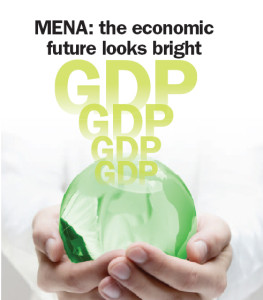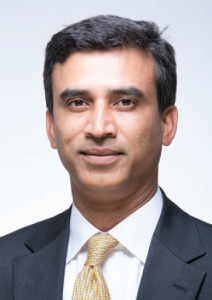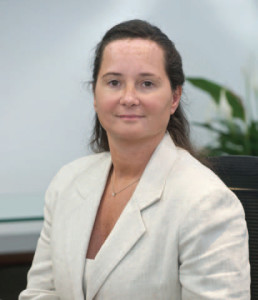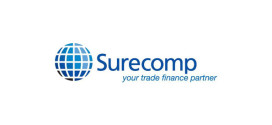
Increased government spending is helping to drive up GDP growth and regional trade. LIZ SALECKA looks at the factors behind the momentum
In spite of concerns that a global economic downturn could impact the price of oil, and future levels of spending and investment in the Middle East, these fears have proved unfounded and today the region has a positive economic outlook for 2013.
Increased government spending on a range of projects in areas such as infrastructure, coupled with new social programmes, have continued – and this is helping to drive GDP growth as well as regional trade.
“There have been a number of significant investment projects in major economies in the Middle East and this will continue in the coming years. Governments have increased their expenditure to drive growth, and the price of oil has continued to support this,” says Asif Raza, managing director, head of treasury services MENA, at JP Morgan. “Many governments have also accumulated significant reserves in past years, which they can use to support spending.”
Across the Middle East, banks today remain relatively immune to the liquidity issues experienced in other parts of the world, and traditional working capital facilities are available to a large cross-section of corporates, seeking both short and long-term facilities.

director, head of treasury
services MENA, at JP
Morgan
However, there are also some suggestions that the region’s political climate is still having an impact on banks’ lending activities.
“One of the biggest factors that is affecting the ongoing availability of bank finance in the region is the Arab Spring,” says Obay Abu Ghosh, MENA treasury manager, Hikma. “Many banks across the region are now sitting on more surplus cash resources, which is effectively idle cash because of the political situation.”
He, nevertheless, points out that, although banks are more conservative in their lending, this does vary from one business sector to another.
“For us, in the healthcare industry, this has not proved to be a major issue – but sectors such as tourism and property have been hit.”
Trade to the fore
In spite of this, trade finance has really come to the fore in the Middle East over the last year, and both regional and local banks are increasingly complementing their provision of working capital facilities with trade financing.
To a large extent, their greater focus on trade finance stems from the positive economic outlook, and the ongoing expansion of regional trade, which looks set to continue throughout 2013.
“Regional trade activities in the MENA region have continued to grow at a much faster rate than in some other parts of the world,” says Raza. “Across the region, trade finance is not seen as a replacement for working capital loans. It is seen as an important way of financing trade business.”
And he adds, “It is also clear that in instances where working capital loans were commonly used in the past, trade finance may have been more suitable – and this is also driving banks’ focus on trade finance.”
As regional and local banks increase their involvement in trade finance, they are also expanding their capabilities. Their increased focus on trade finance has opened the door for them to start offering new products and services, including more sophisticated structured trade finance solutions, which have traditionally been the preserve of foreign banks.

services origination, RBS, Middle
East and Africa
“When it comes to short-term working capital requirements, trade finance has come into its own through traditional and innovative products. The remit of trade finance has widened to include many types of working capital solutions,” confirms Sherie Morais, head of transaction services origination, RBS, Middle East and Africa.
Hikma, whose Middle Eastern operations span Egypt, Tunisia, Bahrain, Libya and Yemen among other countries, is using trade finance solutions to exploit new opportunities for trade across the region – and grow its business.
“Political issues have also impacted trade flows across the region and this has affected companies such as Hikma because we are present in several countries. However, we have been able to finance our receivables through discounting,” says Abu Ghosh, pointing out that “there are now several financing instruments available to us to finance our working capital and ensure our trade flows throughout the region”.
Growth in supply chain finance
There are also huge expectations that the provision of – and demand for – supply chain finance – will grow this year.
Morais points out that many corporates are increasingly looking to their supply chains to enhance their working capital cycles.
“Supply chain finance has really moved ahead over the last two years,” she says. “Originally, it was seen as a solution geared more at the small-to-medium-sized (SME) market but large companies and multinationals are now recognising the opportunity it presents to unlock liquidity and improve balance sheet efficiency.
“It provides a win:win situation for both the buyer and the supplier,” she adds, pointing that many companies are now looking at their end-to-end supply chains, which often span countries outside the region.
Regional banks and local banks are now also playing a much bigger role in the provision of supply chain finance.
“Local banks are aware of the changing trends in supply chain finance, and we will see a movement from them towards providing these services in the future,” says Morais.
Meanwhile, Raza points out that the increased focus by both local and regional banks in MENA will help to create a much larger market for supply chain finance in the Middle East.
“There will be a stronger focus on supply chain finance in 2013 and this is good news for the region. As more banks get involved in promoting supply chain finance, this will drive corporates’ understanding and awareness of this product, and it will become more widely accepted and appreciated,” he says.
Investment in technology
Recent years have seen both banks and corporates across the Middle East increase their investment in new technologies, and this, too, is expected to continue throughout 2013.
Both local and regional banks are building up transaction banking businesses so as to meet corporates’ changing requirements – as well as take advantage of new opportunities to develop a fee-based business.
Meanwhile, many Middle Eastern corporates, which are increasingly looking to deploy online transaction banking services, are also investing in the latest treasury technologies so that they can move away from traditional spreadsheet-based processes.
“Different companies have different levels of technology in place and some are more robust than others. Treasury is definitely an area where companies are looking to invest more so they can improve visibility into – and control over – their cash and working capital,” says Raza.
And he adds, “Companies are also investing in processes that will improve their transparency and governance.”
This is also noted by Morais, who believes that, although there has been a lot of investment in new treasury systems recently, most companies are focusing on maximising the benefits offered by their current systems.
“When it comes to technology spend, for the majority of corporates the biggest focus now is on the systems and upgrades required for regulatory and compliance reasons,” she says. “However, there is investment in streamlining and consolidating payment flows, and companies are also looking to ensure that their reporting systems are in order.” n
Cash is still king
Today, effective cash management still takes precedence for many major corporates across the Middle East, which are continuing to place a strong emphasis on managing payables and receivables – as well as the security of their investments.
“Treasurers who are investing surplus cash resources are paying more attention to how safe their investments are – they want improved visibility and security,” says Sherie Morais at RBS, Middle East and Africa.
“Businesses generally are cautiously optimistic. They learnt a lesson during the financial crisis and recognise the importance of managing their cost base and effective cash management.”
This is also emphasised by Obay Abu Ghosh at Hikma, who points out that Middle Eastern governments’ increased focus on new priorities, such as healthcare spending, have brought new opportunities for companies such as Hikma – but that effective cash management is still a major priority.
“As a result of this switch in government focus, banks have the appetite to utilise their cash to finance the expansion of companies in the healthcare sector. However, as we take on more bank finance, we need to focus more attention on our collections to service the debt. We have to improve our cashflow operations and ensure the stability of our cashflows,” he says.
Greater appetite for emerging markets
While the key factors impacting the provision of bank finance in the MENA region currently revolve around liquidity, product innovation and risk management, banks are also starting to display an improved appetite for emerging market trade.
As the GCC region is a gateway for emerging markets in Asia, other parts of the Middle East and Africa, financial institutions with foresight are expected to position themselves to capitalise on enhanced trade prospects in the years ahead.
Many regional banks are already refocusing on the traditional strengths of trade finance, which they are starting to see as a stable source of revenue, backed by tangible physical transactions that represent relatively lower risks.

Platinum Corp FZE
This renewed focus is expected to facilitate the progress of regional trade hubs across the region, which have a strategic geographical advantage, and well-developed infrastructure, according to Suresh Vaidyanathan, CFO, Platinum Corp FZE.
“The region could potentially ride on the inter-regional trade prospects with Africa. It can, for instance, facilitate trade between the BRIC nations and Africa, which is estimated to grow from $300bn in 2012 to $500bn within the next three years,” he says.
“Another major factor is China’s increasing trade prospects with GCC, which is estimated to hit $500bn by 2020. With Chinese RMB starting to be accepted, albeit slowly, as a currency for cross-border trade, financial institutions seem to be gearing up for structuring trade finance products in this area.”
He adds that another key trend anticipated for 2013 is a growing movement by corporates to seek out innovative financing structures that can be deployed across their supply chains.
“Demand is likely to grow as corporates look to achieve better return on equity through economic leveraging, whilst seeking to increase trade volumes and achieve economies of scale. Efforts by regional institutions to comprehend the transaction dynamics better and structure their products accordingly will obviously be critical,” he says.
“Collaborative structures involving both the supplier and customer with a common banker may also emerge, with international banks playing a key role.”
 Cash And Trade Magazine For Cash and Trade professionals in the Middle East
Cash And Trade Magazine For Cash and Trade professionals in the Middle East





One comment